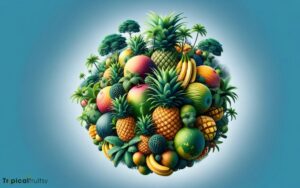Are Bananas a Tropical Fruit? Yes!
Yes, bananas are indeed classified as tropical fruits. They originate from the equatorial regions and require specific climatic conditions to flourish, which are characteristic of the tropics.
Bananas are native to Southeast Asia and are well-suited to the warm, humid, and rainy conditions of tropical climates.
These fruits are part of a larger group known as tropical fruits, which are typically not resilient in frost and do not thrive in cold environments.
Here are some aspects that affirm bananas as tropical fruits:
Bananas exemplify tropical fruits with their need for year-round warmth and moisture to prosper.

Key Takeaway
4 Criteria: Bananas as Tropical Fruit
| Criteria | Description of Bananas as Tropical Fruit |
|---|---|
| Botanical Origin | Southeast Asia |
| Climate Requirements | High humidity, consistent rainfall, warm temperatures |
| Global Cultivation | Widely cultivated in tropical and subtropical regions |
| Varietal Diversity | Over 1,000 known varieties |
Defining Tropical Fruits
Tropical fruits, a category encompassing a diverse array of species, thrive primarily in the warm, frost-free climates of the equatorial regions.
Characterized by their necessity for high humidity and consistent temperatures, these fruits have adapted to their environment with features such as thick skins for moisture retention and bright colors for attraction of specific pollinators.
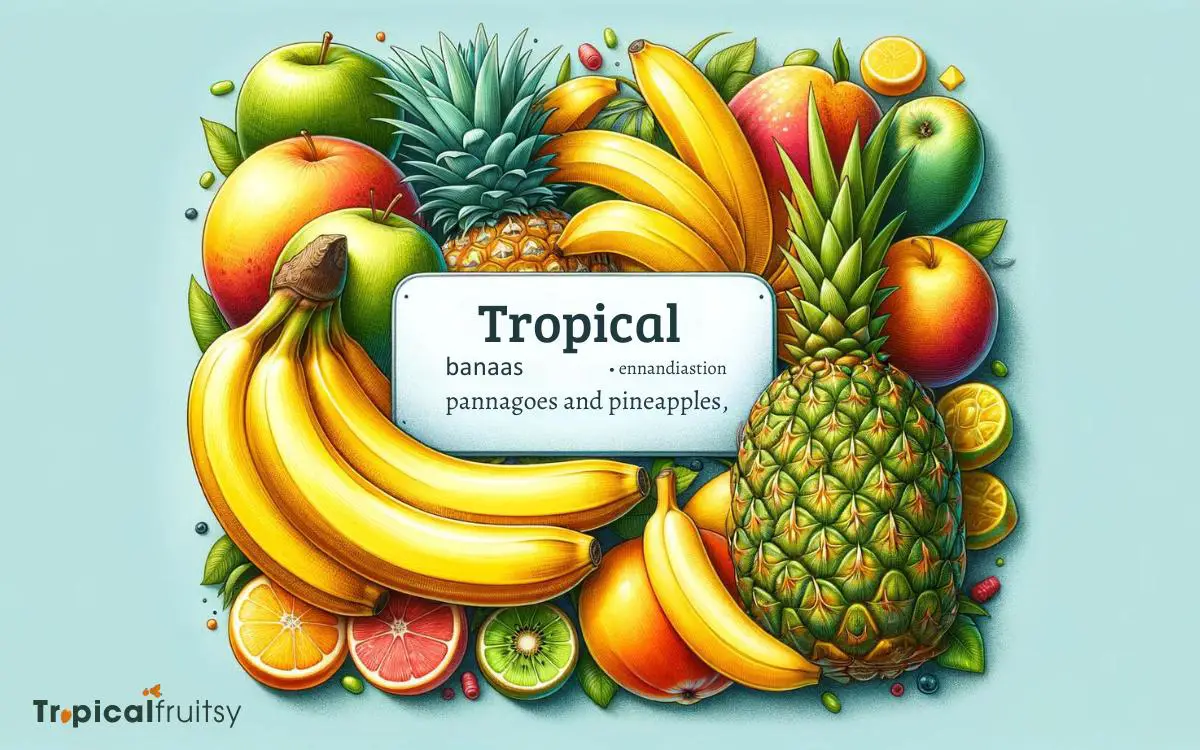
Botanically, they are defined by their growth pattern and structural characteristics, including seed dispersal mechanisms that often involve symbiotic relationships with native fauna.
Analyzing the phytochemical properties of tropical fruits reveals a rich composition of vitamins, minerals, and antioxidants, which contribute not only to the nutritional value but also to the distinct sensory profiles—flavors, aromas, and textures—that define this group of fruits and distinguish them from temperate counterparts.
The Banana’s Origins
Originating in Southeast Asia, bananas are one of the quintessential tropical fruits, with their cultivation dating back thousands of years.
The genus Musa, to which bananas belong, is believed to have evolved in this region, spreading later to Africa and other tropical regions.
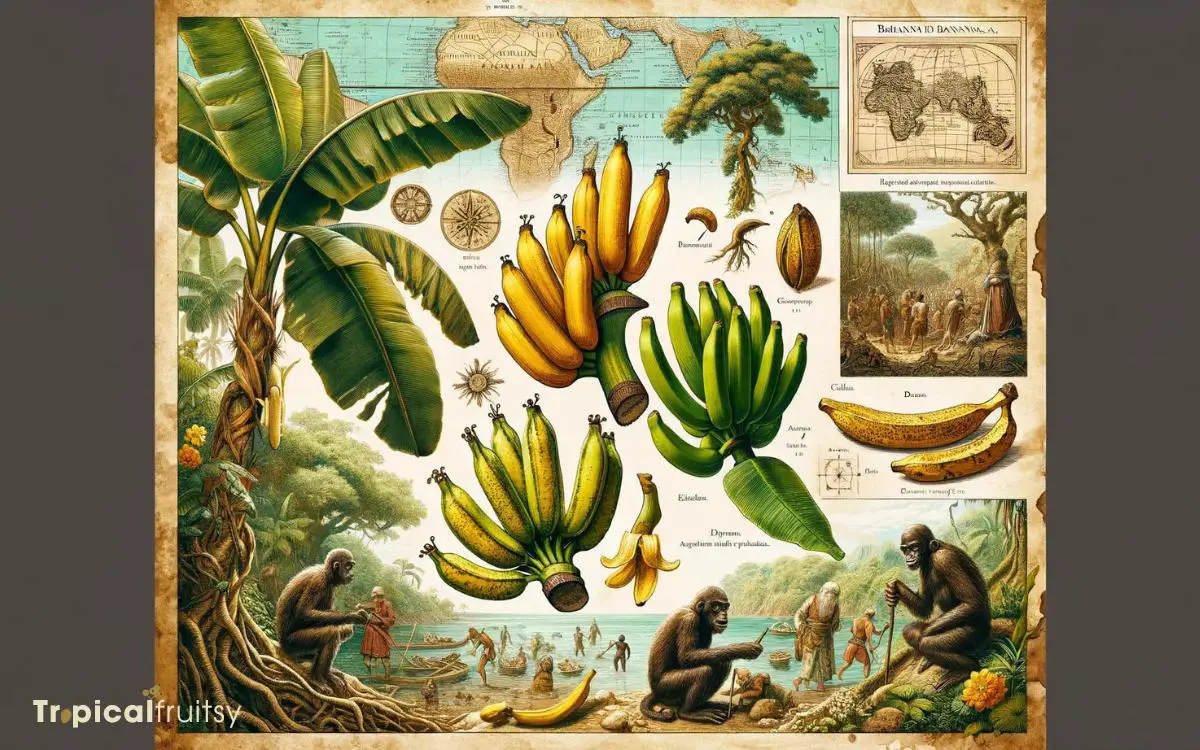
Genomic analyses have revealed a complex hybridization history involving two wild species, Musa acuminata and Musa balbisiana, leading to the development of the numerous varieties seen today.
The primary domesticated cultivars exhibit triploid genetics, a result of selective breeding practices aimed at enhancing desirable traits such as seedlessness and palatability.
Historical records, including those from ancient Papyrus scripts, suggest the integration of bananas into human agriculture occurred as early as 5000 BCE, solidifying their status as a staple in tropical agronomy.
Climatic Needs for Cultivation
Bananas require a consistently warm climate, with temperatures ranging from 20°C to 35°C, to thrive and produce fruit. These conditions are critical for their growth phases, which include flowering and fruit development.
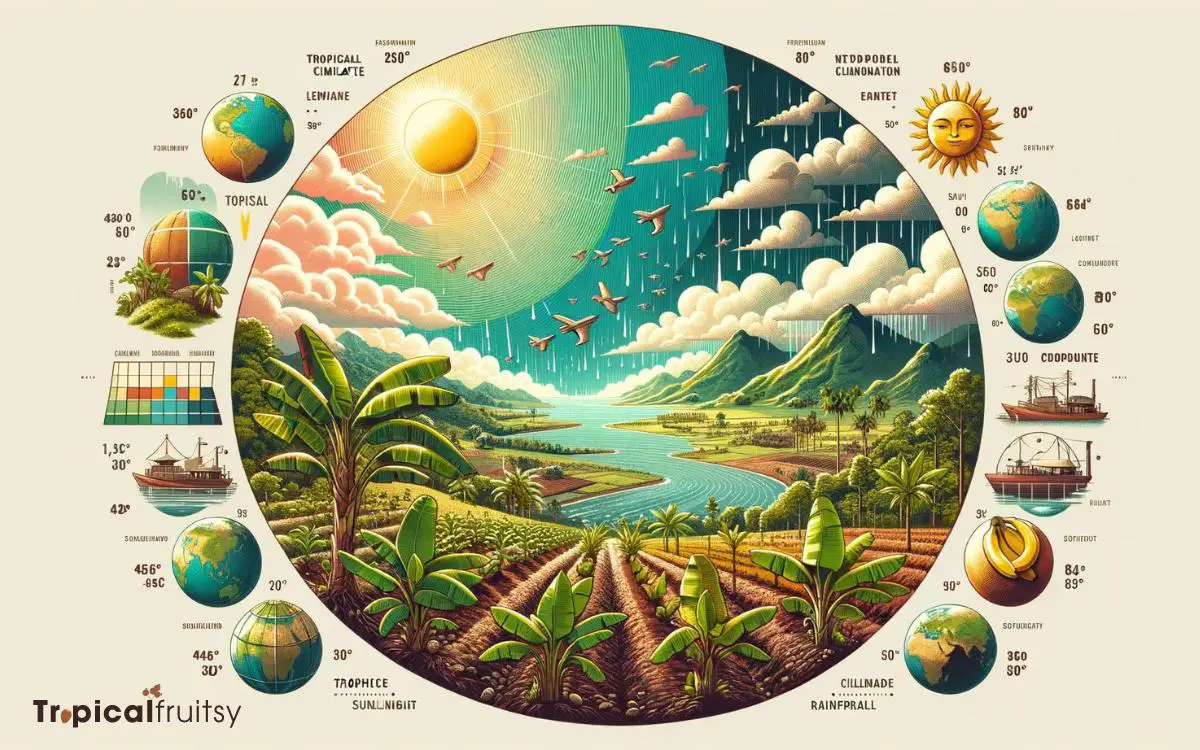
To elucidate the precise climatic requirements for the cultivation of bananas, consider the following:
- Temperature: Optimal growth occurs at 27°C. Temperatures below 14°C slow down growth, while frost is detrimental.
- Humidity: High atmospheric humidity, around 50% or higher, is necessary to prevent excessive water loss from the plant.
- Rainfall: Bananas need abundant, well-distributed rainfall, typically between 100 to 200 millimeters per month, without prolonged dry periods.
These parameters are essential for the physiological processes of the banana plant, including photosynthesis, transpiration, and nutrient uptake.
Banana Varieties and Regions
Over 1,000 varieties of bananas are cultivated worldwide, primarily in the tropical regions of Asia, Africa, and Latin America.
These varieties can be categorized into sweet bananas, commonly referred to as dessert bananas, and plantains or cooking bananas.
The former includes the ubiquitous Cavendish variety, which dominates global export markets due to its robustness and longer shelf life.
In contrast, plantains are starchier and consumed as a staple food in many tropical regions after cooking.
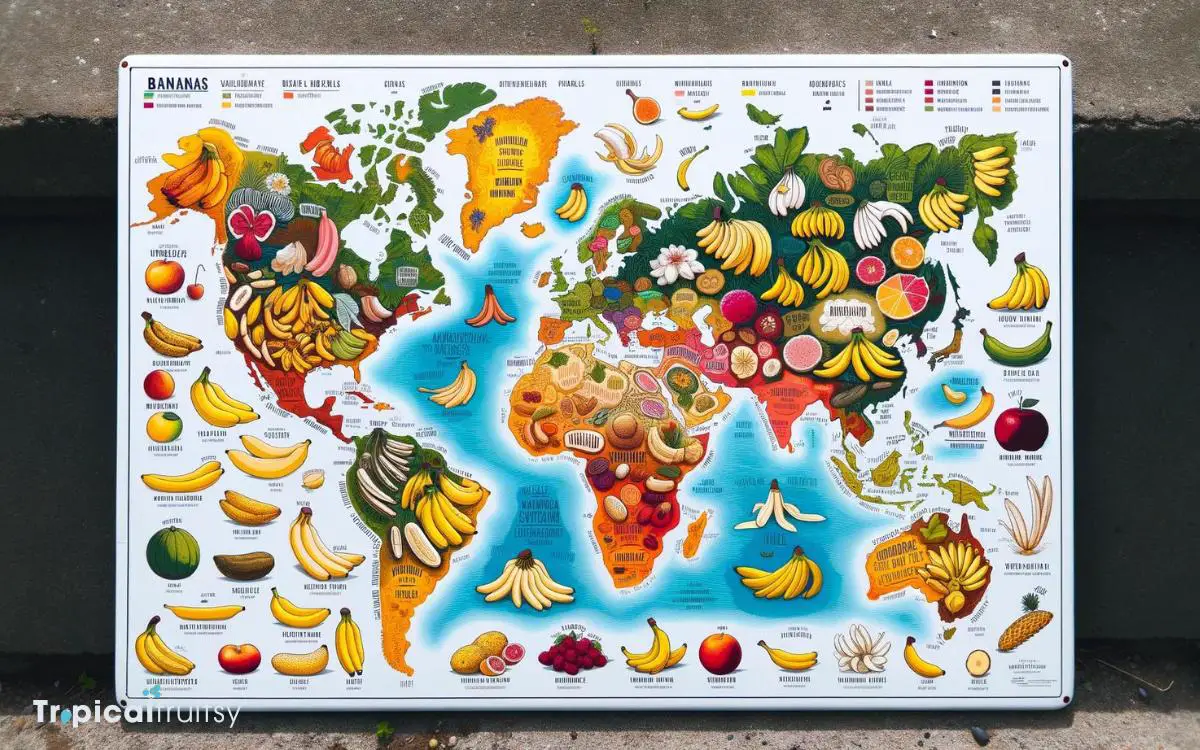
The distribution of banana varieties is largely contingent upon climatic conditions, soil composition, and altitude.
Southeast Asia, particularly the Philippines and India, is renowned for its diverse banana cultivars.
Meanwhile, East Africa contributes significantly through the cultivation of both East African Highland bananas and plantains.
Latin America’s banana production is concentrated on export-oriented varieties, with Ecuador being a leading exporter.
Nutritional Profile and Benefits
Bananas are renowned for their high potassium content, which is crucial for maintaining electrolyte balance and proper muscle function.
Their significant dietary fiber content aids in digestive health and can contribute to a reduced risk of cardiovascular disease.
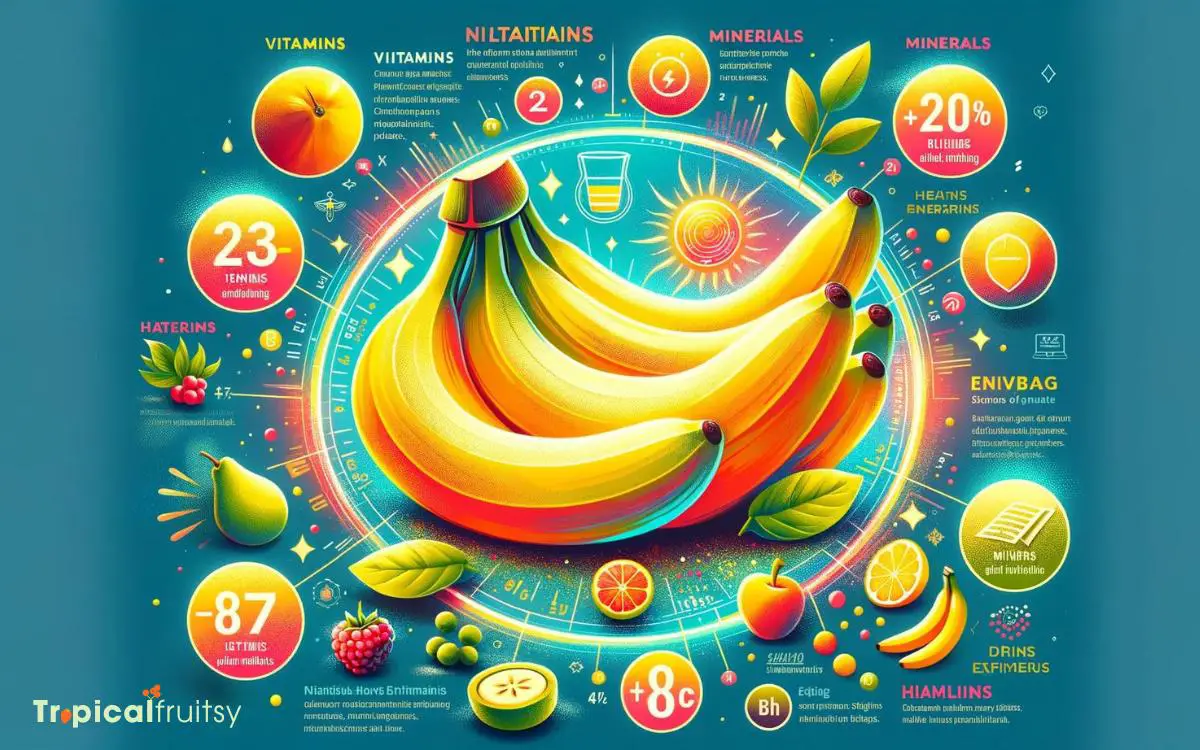
Additionally, the presence of vitamin C in bananas supports immune system function and acts as an antioxidant, mitigating oxidative stress.
Rich in Potassium
Renowned for their high potassium content, bananas offer significant health benefits, including the maintenance of proper muscle function and regulation of blood pressure.
Each medium-sized banana contains roughly 422 milligrams of potassium, which is about 9% of the recommended daily intake. This essential mineral is critical for a range of physiological processes.
- Electrolyte Regulation: Potassium is a key electrolyte in the body, helping to maintain fluid balance across cell membranes and contributing to nerve signal transmission.
- Cardiovascular Health: Adequate potassium intake is associated with lowered risk of stroke and may help reduce the likelihood of developing heart disease by managing blood pressure levels.
- Metabolic Functions: As an electrolyte, potassium plays a significant role in converting glucose into glycogen for energy storage and supporting overall metabolic health.
Dietary Fiber Content
While bananas are celebrated for their potassium levels, they are also a rich source of dietary fiber, providing about 3 grams per medium-sized fruit, which supports digestive health and aids in maintaining a healthy weight.
The fiber in bananas is predominantly of the soluble type, which is known for its ability to moderate blood glucose levels and lower blood cholesterol.
Pectin, a form of soluble fiber found in bananas, tends to increase as the fruit ripens. This fibrous component not only optimizes bowel regularity but also acts as a prebiotic, stimulating the growth of beneficial bacteria in the gut.
Incorporating bananas into one’s diet contributes to satiety and may prevent overeating. These attributes render bananas a valuable inclusion in a balanced diet, particularly for individuals targeting weight management and metabolic health.
Vitamin C Abundance
In addition to their fiber content, bananas offer a significant amount of vitamin C, an essential nutrient that plays a crucial role in immune system function and skin health.
This water-soluble vitamin acts as an antioxidant, protecting cells from damage by free radicals and supporting the production of collagen, a protein that maintains skin integrity and elasticity.
- Immune Support: A medium-sized banana provides approximately 10% of the recommended daily intake of vitamin C, aiding the body’s defense against pathogens.
- Antioxidant Properties: Vitamin C neutralizes free radicals, thereby reducing oxidative stress and potentially lowering the risk of chronic diseases.
- Collagen Synthesis: Essential for the biosynthesis of collagen, vitamin C contributes to the repair and growth of tissues, promoting wound healing and maintaining skin health.
How are Bananas Related to Tropical Smoothies and Other Tropical Fruits?
Bananas play a vital role in tropical smoothies and other tropical fruits. Their natural sweetness and creamy texture make them a perfect addition to smoothies, providing a great base for various flavors. When blended with other tropical fruits, bananas create a delicious and nutritious tropical smoothie real fruit explained.
Comparing Bananas to Other Fruits
Although bananas are commonly associated with tropical climates, they differ from other tropical fruits such as pineapples and mangoes in terms of cultivation requirements and nutritional profiles.
Bananas thrive in more diverse environments, able to tolerate a range of soil conditions and altitudes, whereas pineapples and mangoes typically demand more stringent horticultural parameters for optimal growth.
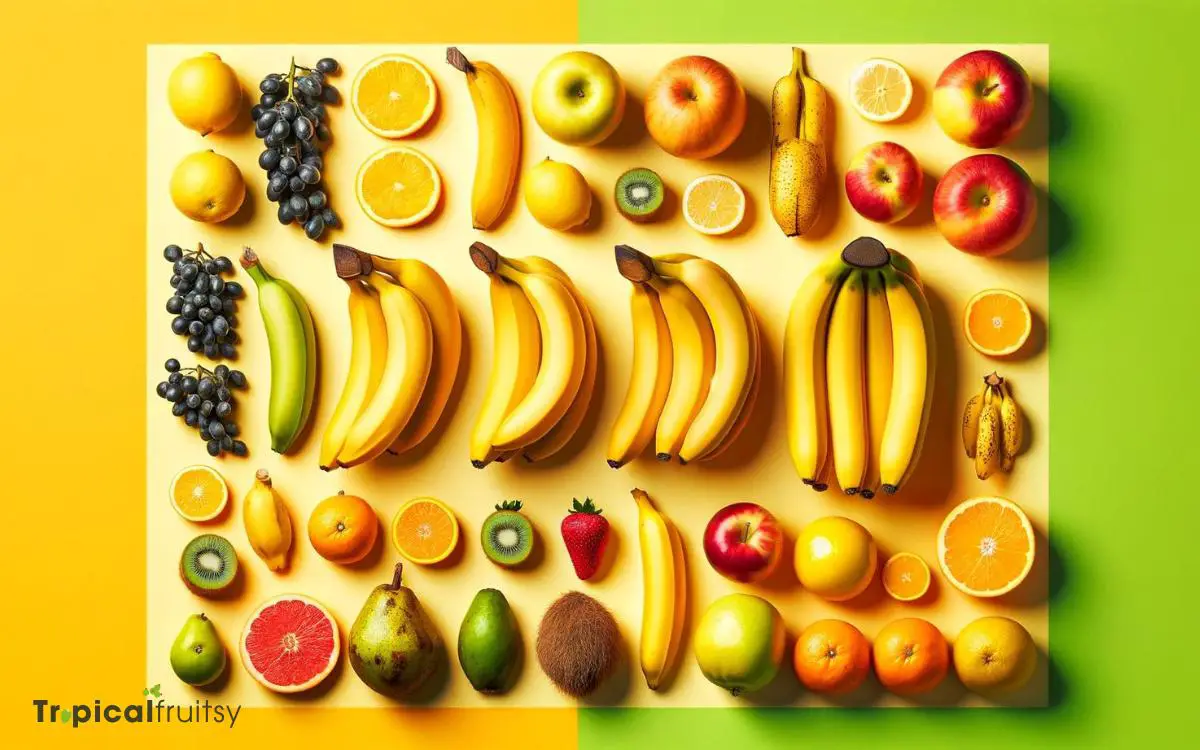
Nutritionally, bananas offer higher levels of potassium and vitamin B6 but are not as rich in vitamin C as compared to these other tropical counterparts.
Moreover, bananas have a distinctive composition of digestible carbohydrates, making them a quick energy source.
Analytically, when comparing post-harvest storage and transport, bananas exhibit a greater sensitivity, necessitating careful handling due to their climacteric nature which leads to rapid ripening postharvest.
Conclusion
Bananas epitomize the quintessence of tropical fruits, with their origins anchored in the lush biodiversity of Southeast Asia. Their cultivation is inextricably linked to warm, humid climates, underscoring their tropical identity.
Through a diversity of varieties, bananas contribute significantly to global nutrition, offering a cornucopia of health benefits.
When juxtaposed with other fruits, bananas hold their own, embodying the adage ‘An apple a day may keep the doctor away, but a banana can shine just as brightly.’





